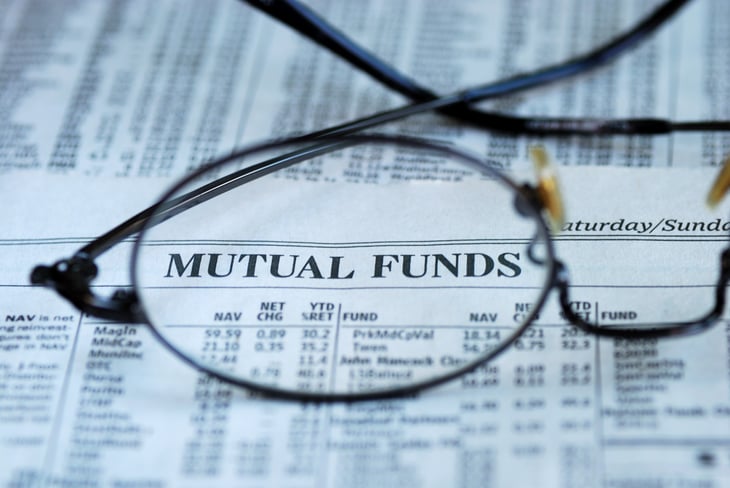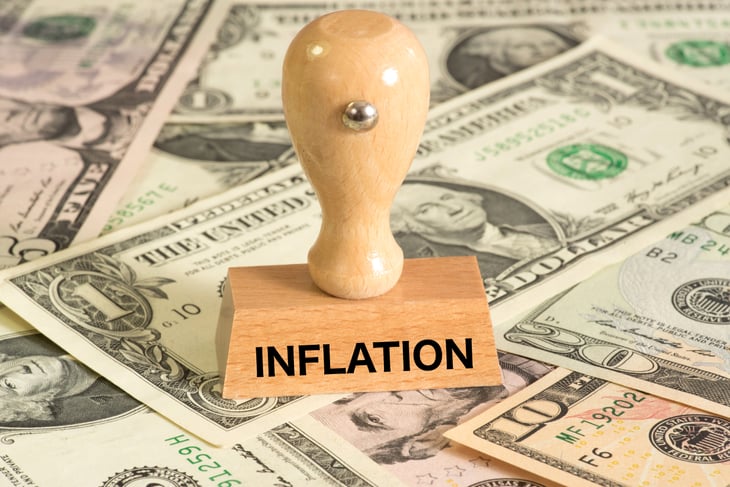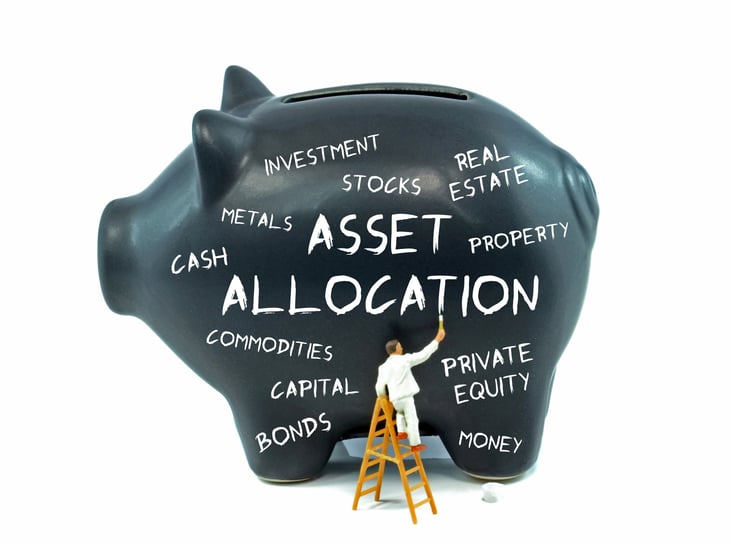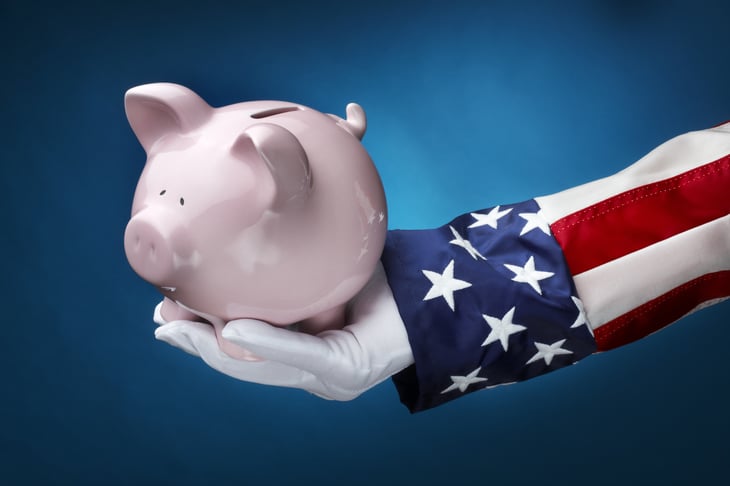
Editor’s Note: This story originally appeared on NewRetirement.
There are many guidelines around on how to draw down your savings in retirement (the 4% rule, the multiply-by-25 rule), but what if you don’t have to spend your savings?
You can generate retirement income with dividend stocks, and in a world where savings accounts produce less than a 1% return, dividends can provide a steady stream of cash without having to dip into your principal.
Most retirement savings strategies tell you to invest in stocks when you’re young and bonds when you get close to retirement. For example, the “rule of 100” says you should subtract your age from 100 and the answer is the share of your money you should invest in stocks. So if you’re 25, 75% of your money should go into stocks and 25% should go into bonds. And when you’re 55, 45% of your money should go to stocks and just over half should go to bonds.
But these rules make a lot of assumptions, most of them based on investing wisdom from the 1980s. One assumption is that stocks are a lot riskier than bonds and that bonds offer steady income rather than just gaining in value.
In reality, over the last 30 years, stocks have become a lot less risky for retail investors who are able to invest in funds that own stocks in a diversified portfolio. And because governments all over the world have been printing money to contain their economies through the 2008 Great Recession and the COVID-19 crisis that began in 2020, the yield on bonds — the cash income you get for holding them — has dropped to nearly nothing.

Dividend stocks are shares of companies that pay dividends. Not all companies pay dividends on their stock, so not all stocks are dividend stocks.
Dividend income definition: Owning a share of stock is like owning a piece of a company. Companies that make a profit sometimes pay their owners part of that profit — their income — which is a dividend.
Pro: Dividend stocks are usually also value stocks

Stocks that pay dividends are shares of companies that make money. That means they have a steady profit they share with shareholders and they’re probably not going out of business any time soon. This makes them a somewhat safer, less risky option for retirees.
Value stock definition: A value stock has a low price relative to the company’s income and the dividends it pays. (The opposite of a value stock is a growth stock — like Facebook, Amazon or Google — that pays no dividends but the company is growing fast and the stock price is zooming.)
Benjamin Graham, the “father” of value investing, said way back in 1949 that investors should buy stocks of profitable companies that have at least 20 years of reliable dividends. These companies have been paying a steady dividend for at least 50 years, and most of them you’ve known since you were born:
- The Coca-Cola Co. (dividends since 1920)
- Colgate-Palmolive Co. (dividends since 1895)
- Hormel Foods Corp. (dividends since 1928)
- Johnson & Johnson (dividends since 1963)
- Lowe’s Companies (dividends since 1961)
- Stanley Black & Decker (dividends since 1876!)
Value stocks that pay dividends are sometimes called “dividend heroes” because they are reliable providers of value in markets that can sometimes be rollercoasters, riding high and sinking fast.
Con: Individual stocks can be risky, even if they’re value stocks

For decades General Electric was a “blue chip” stock, meaning it was reliable and paid a consistent dividend. If you bought $100 of General Electric stock in 1970 and sold it in 2016, it would have returned more than 21% per year, and your final net worth (assuming dividend reinvestment) would be $784,703.30.
Blue-chip stock definition: Blue-chip stocks are shares of industry leaders in mature industries that produce consistent profits and dividends.
On the other hand …
The Great Recession forced General Electric to sell its lucrative financial services division and exposed the company as an unnecessarily big, complicated organization with a lot of hidden debts.
Its CEO from 2001 to 2016 stepped down, and his replacement served less than two years before another replacement was brought on board to right the ship. Then the COVID-19 crisis hit, demolishing one of GE’s last profitable businesses: airline engines.
Today GE stock is worth only a fraction of what it was 10 years ago, and its dividend has been slashed.
Con: Dividend stocks are usually in utilities, banks and old-line industry

Many dividend stocks are in sectors that make a lot of money on products that people need, like energy, financial services and consumer goods. This can produce a lot of cash income, but it can also mean your companies are in some pretty narrow buckets.
When the oil industry crashed at the beginning of 2020, a formerly reliable dividend stock like Exxon-Mobile slashed its dividend in half. If all your dividend stocks were shares of oil companies, you’d have lost a significant chunk of your income.
Pro: You can get great dividend diversification with mutual funds and ETFs

There are many dividend- and income-focused mutual funds and exchange-traded funds (ETFs). Vanguard, Charles Schwab and Blackrock all offer high-dividend ETFs and mutual funds that either have a broad focus, like the highest dividend stocks in the S&P 500 index, or a narrow focus, like real estate companies.
The dividend yields on these funds average 3% and can be as high as 9%. And the risk that an individual company falls on hard times is mitigated by the other companies in the fund.
You can also diversify sector risk by owning several sector ETFs or mutual funds or by owning an index fund that focuses on dividends but owns hundreds of companies in every sector.
Con: Stocks are generally riskier than bonds and other fixed-income assets

The fates of individual companies depend on a lot of factors, and no one except a professional stock analyst can do enough research to pick the long-run winners from the losers. And maybe not even then!
On the other hand, the most reliable bonds — U.S. Treasurys — are considered “risk-free” because no one in the world expects the U.S. government to default on its debt obligations, which is exactly what a U.S. Treasury bond is.
Pro: Dividend stocks produce more cash flow than bonds (by a lot)

The yields on bonds around the world have been terrible since the Great Recession over 10 years ago.
Bond yield definition: Bond yield is the income you get from a bond. The yield on bonds is higher the riskier they are and the higher interest rates are.
Nominal interest rate definition: The nominal rate of interest on a bond is the advertised rate, so if the bond issuer — in this case, the U.S. government — says they will pay you 1% per year to borrow your money, that’s the nominal rate.
Real interest rate definition: The real interest rate of a bond is the nominal rate minus inflation. If the nominal interest rate is 3% and inflation is 2%, your real interest rate is 1%.
When the real interest rate is negative, you are paying the government to keep your money safe. Needless to say, this is not a great long-term strategy.
Though you can buy inflation-protected bonds (called TIPS for “Treasury inflation-protected securities”), the yield on these bonds is negative. So even with TIPS you are paying the government a fee to keep your money safe.
Pro: Dividend stocks perform better during times of inflation

Many companies that pay dividends — the old-line industrial and consumer goods companies, utilities and banks — also make bigger profits during inflationary periods.
Banks do better when money is changing hands often, and if the government raises interest rates to cool down inflation, banks make more money then too.
Inflation is also good for energy, materials and industrial companies because their pricing power — and the price of what they sell — goes up.
Con: Asset allocation can be tough to figure out

What’s the right mix of dividend-producing investments and hedges against market volatility? Unfortunately, that depends on your risk tolerance.
The best way to model out the right amount of income you need versus the amount of money you want to invest to grow your nest egg is to use a bucket strategy. As part of the NewRetirement Planner, you can create a very detailed budget and set different levels of spending for needs and wants. This can be an incredibly useful planning exercise in helping you decide how much to invest when and where.
Pro: Dividends can have tax advantages

Dividends paid by companies can either be classified as income or capital gains. According to the IRS, “Whereas ordinary dividends are taxable as ordinary income, qualified dividends that meet certain requirements are taxed at lower capital gain rates.”
The difference between the two rates can be a lot. If your income puts you in the top U.S. tax bracket, you pay 37% on part of that income to Uncle Sam. On the other hand, if you own companies that pay qualified dividends your top tax rate on that money is only 20%. Especially if you are reinvesting that money into buying more stock, the difference in returns over 10 years can be enormous.
You can do research to see what companies pay qualified dividends and which don’t. The rules according to the IRS are:
- The dividend must have been paid by a U.S. company or a qualifying foreign company.
- The dividends are not listed with the IRS as those that do not qualify.
- The required dividend holding period has been met.
As with most stock investing, the easy way to guarantee your dividend stocks pay qualified dividends is to buy them in bulk in an ETF or mutual fund. (Vanguard has a list of its qualified dividend ETFs here.)
Even if you don’t own companies that pay qualified dividends, if you own those companies in a Roth IRA or Roth 401(k), the dividend income grows tax-free.
